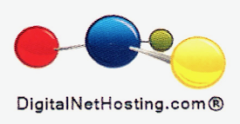Using the Visual Studio Report Tool
The visual studio report tool collects the graphical query and design tools that are hosted within the environment. As long as the report designer provides the report data pane, then the visual studio report designer will easily organize the data in the reports of people. As long as the visual studio report tool provides the query designers to help them specify the data that they need in order to retrieve from the data sources. As long as the expression dialogue can specify the report in order to use the layout.
It is very important to provide the query designers in order to help the specify data in order to retrieve from the data sources. As long as the visual studio c# will go for the expression dialog in order to specify the report data in order to use the report layout. You can also go for the query design tools that require for the reporting services in order to connect to report the data. When you work with the report expressions then you can always design the report layout. If you have the visual studio c#, we suggest that you connect the reported data with the report expressions. You may also go for your ideal layout in order for you to actually host the visual studio c# option.
If you also have the option to go for the Report Designer that can start the menu, then you can point to the programs in order to go for the SQL server 2008 that will comply with your system. After you open the business intelligence development studio, then you can always create and open the new project template. Once you’ve selected the report server project, then it will be easy to just go for the report designer that you opt for. The visual studio report tool will then provide with you the project that you need as long as the data that you already have with you.
It is very easy to learn how to create the reports that you need with the visual studio report tool. You can always opt for the report design basics in order for you to understand the tutorial with the creation of the basic table report. If you have the tabular, chart, matrix and freeform reports and gauges, then you can always opt for the visual studio report tool needed for you to actually make things work.
The visual studio report tool may also come with the report definition that is listed in the reported description of the changes and the saved .rdl files that are connected to the reported changes. When you are designing the report with the software, you can always go for the reports that are processed and rendered whenever you go for the report server uses. When you ensure these then you can always decide on which report to go for. You can also publish the report of the company in the visual studio report designer. Once you have decided to publish this to the server, you will see that the hard drive is copied to the report server database.
Whenever you go for the deployment and building up of the commands available in order to go through the visual studios for more information that will go for the publishing data sources and reports that provide the multiple way in order to export the report and the different file format like the Microsoft Excel and Microsoft Word. If you can also get the information that you need to view and save the reports, then you can check whether these are outstanding and beneficial to your company. Once you’ve decided on this matter, then this is the one that you can go for the visual studio report tool.
View on-line demo:
http://www.perpetuumsoft.com/Demo/Rss/RssWebDemo.aspx?lang=en&pid=21
Source by Perpetuum Software Team


